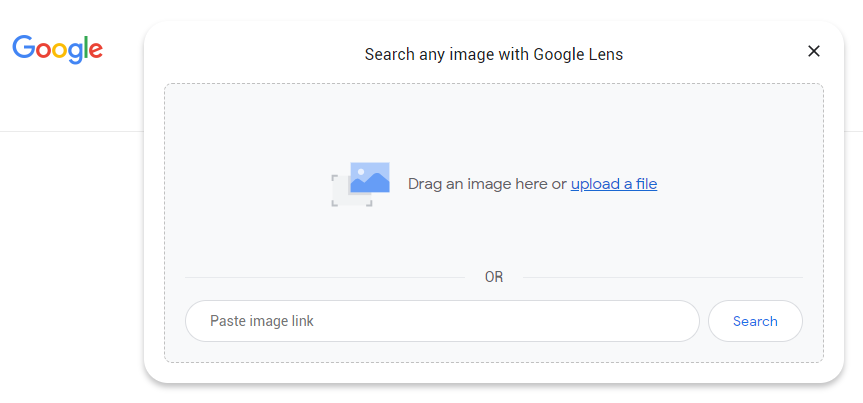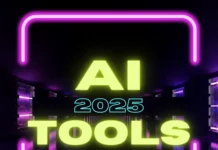
Search engines have become integral to nearly every person’s internet usage. If you seek answers or recommendations, search engines are your best resource. You only need to type in your question or a few keywords, and you can get the information you need.
Google, Bing, and other search engines are evolving all the time. They adapt to changing trends, consumer needs, and available technology. Incorporating artificial intelligence into their functions is one of the most recent innovations search engines have adopted.
This article will discuss Google SGE and Bing AI—familiar search engines we all know and use, equipped with new features powered by artificial intelligence. We will also cover the changes that come with these innovations and how companies and SEO professionals can adapt.
Understanding Google SGE and Bing AI
Google and Bing are two of the most popular and widely used search engines. Google’s Search Generative Experience and Bing AI represent their respective AI-powered versions.
Artificial intelligence has experienced a recent mainstream boom. Various AI tools and functions have integrated themselves into different industries, like AI tools for social media, as they can be programmed to perform specific tasks.
These new launches of AI capabilities aim to enhance search engine functionality and address changing user needs.
Google SGE
Google’s newly launched Search Generative Experience is currently a limited opt-in feature for users in the United States. It incorporates key generative AI features to analyze and summarize large amounts of data.
Google SGE aims to enhance the user’s search experience. If you enter a question or generic query into Google’s search bar, you will see a summary of the most relevant answers on top of the search results page. These summaries could also include relevant images, lines of code, recipes, etc.
SGE will also include a list of sources and references of the information they put in the summary so users can fact-check.
If users want to expand on the results of their query, they can ask for a follow-up with a click, and SGE will explore alternative perspectives or dimensions of the topic. They can also tap or click on suggested next steps to look up related topics or questions.
Aside from improving search results and offering relevant information, SGE also has image generation capabilities. You can input image generation instructions into the search bar, and Google SGE will create that image using AI. You can also see AI-generated images on the Google Images tab.
Bing AI
Bing AI works similarly to Google SGE by utilizing generative AI features to improve its functionality. It is currently powered by OpenAI’s GPT-4. Microsoft launched Bing’s AI capabilities alongside a major update of Microsoft Edge, its proprietary browser.
Bing AI’s most talked about feature is Bing Chat, the search engine’s AI-powered chatbot. It responds to diverse user prompts conversationally and efficiently while being informative and concise.
Bing Chat works similarly to ChatGPT but can provide more updated information. The generative AI technology behind Bing Chat uses similar training to older GPT models. However, the answers generated by Bing Chat reference newer web pages indexed by the search engine.
Aside from Bing Chat, Bing AI has similar features to Google SGE. With every search or query, Bing AI displays a featured snippet detailing a summary of the most relevant information or answers.
It offers an interactive search experience. If a user has further questions related to their query, they can talk to Bing Chat for follow-ups and more expansive answers and information.
Another Bing AI feature is their image creator, accessible through their Images tab. Upon clicking “Create,” users can input prompts to generate relevant images.
How AI Can Change Search Engines
Artificial intelligence has made considerable impacts across various fields and industries. As it makes its way toward search engines, inevitably, it will also affect how internet search works.
As Google and Bing adopt AI-powered features, other search engines will likely follow suit. Here are some of the ways in which AI can and has changed how search engines work:
Personalization
Personalization is crucial to maintaining good user experiences and addressing user needs effectively. AI features allow search engines to become better at providing personalized search results.
Through data analysis and machine learning algorithms, search engines can better understand an individual’s preferences, search history, and behavioral patterns. These capabilities enable them to deliver tailored search results, making the user experience more engaging and relevant.
Improved understanding of search intent
Search intent, also known as user intent, refers to the specific goal or purpose a user has when performing an online search. Understanding search intent is crucial for search engines and content creators because it helps ensure that the search results and the content provided align with the user’s goal.
AI-driven search engines are becoming more intuitive in understanding user intent. Instead of relying only on matching keywords, search engines can use natural language processing (NLP) algorithms to understand the context behind search queries.
This process allows search engines to provide results based on the actual meaning of the query, allowing users to find more relevant information quickly.
Voice and image search
Voice and image search capabilities have become increasingly sophisticated with AI. They are also incredibly useful, as sometimes a query can be better expressed through images or spoken word.
Voice recognition technology, coupled with AI, makes it possible for users to speak their queries, and the search engine can accurately interpret and respond to them.
Similarly, image recognition allows users to search using images, making finding information about objects, landmarks, or even fashion items easier.
For example, here’s how Google image search or Google Lens works.

After pasting an image of a tree by Niko Photos, Google Lens pulls out results of where the image has been used or seen all over the internet. Depending on the image’s obscurity, it can also show other results with similar elements as the source image.

Predictive analytics
Predictive analytics uses data, statistical algorithms, and machine learning techniques to identify future outcomes based on historical data and patterns.
Through AI, search engines can use predictive analytics to anticipate user needs and queries, even before they perform a search. By analyzing user behavior, past searches, and trends, search engines can suggest relevant questions or provide personalized recommendations, enhancing the overall user experience. Similarly, businesses can benefit from social media analytics tools that provide insights into audience behavior, engagement, and content performance. These tools help brands make data-driven decisions to optimize their marketing strategies. To learn more about the top analytics tools that can boost your social media game, check out this comprehensive guide on social media analytics tools.
Identifying the quality of content
Sometimes, websites focus too much on hitting as many relevant keywords as possible while sacrificing the quality of their content. This practice can result in low-quality and spammy content that readers might not be too keen to read or consume.
AI has empowered search engines to assess the quality of web content more effectively. Algorithms can evaluate factors such as readability, authority, and timeliness, ensuring search engines display content with reliable sources and up-to-date information.
Chatbots and customer support
AI-driven chatbots have significantly transformed customer support, including their integration with search engines. When users have inquiries or need assistance, chatbots can engage in real-time conversations, helping them find the information they need or troubleshoot issues.
This integration streamlines the customer support process and provides conversational yet efficient solutions to users.
A good example of an AI chatbot for customer support is that of Amazon’s e-commerce platform. When requesting assistance, you can choose between a phone call and their AI chatbot, which looks like this.

You can choose between typing in your inquiry or selecting one of the option buttons they display on the screen.
SEO Strategies for Keeping Up With AI-Powered Search Engines
As technology evolves, business and marketing strategies must follow suit. The same principles apply to search engine optimization (SEO).
The rise of AI-powered search engines means changes in the way these search engines work. Businesses, organizations, and SEO professionals must consider these changes when developing and implementing their SEO strategies.
Here are some ways companies and professionals can adapt their SEO strategies to changing search engine functionalities and standards:

Understand AI algorithms
AI-driven search engines use complex algorithms that continually evolve. SEO practitioners must invest time in understanding how AI algorithms work to keep up with these changes.
Familiarize yourself with concepts like natural language processing, machine learning, and deep learning, as they form the foundation of AI-powered search. Staying informed helps businesses and SEO professionals adapt their SEO strategies accordingly.
Know your audience
Knowing your audience is an essential part of any SEO or marketing strategy. However, with the rise of AI-powered search engines, this practice becomes even more critical.
AI has enabled search engines to understand user intent and preferences better. To align with this capability, create content that caters to your target audience.
Conduct thorough market research to identify your audience’s needs, interests, and pain points. Tailor your content and website structure to address these factors, ensuring they align with search engine standards and the specific search intent of your users.
Create valuable content
AI-driven search engines prioritize content quality. Your site’s content should be informative, relevant, and engaging to rank well. High-quality content not only attracts more visitors but also keeps them engaged and coming back for more.
Avoid generic and spammy content and aim for in-depth, well-researched articles that provide unique insights or solutions. Ensure your content incorporates a human element that piques users’ interests and addresses their needs.
Use structured data
Structured data, often in the form of schema markup, is a powerful tool for enhancing the visibility of your content in search results. AI relies on structured data to understand and present information to users.
By implementing structured data on your website, search engine crawlers can more easily grasp the context and relevance of your content. This practice can lead to better SERP rankings and featured snippets.
One of the most widely-used languages used in structured data is schema markup. It involves code that you can add to your website to provide search engines with more information about your content.
For example, you can implement a logo markup to tell search engines like Google what your logo is. Once someone searches for your company name on Google, your logo will appear alongside it, such as in the example below.

Optimize for voice and visual search
As voice and visual search become popular, optimizing for these search methods is crucial for businesses and SEO professionals.
Voice search optimization involves creating content that answers conversational queries concisely. Visual search optimization means using descriptive image tags, optimizing image file names, and ensuring images are high-quality and relevant to your content.
These efforts will help your content appear in voice and image search results.
Adapting for Consistent Success
AI-powered search engines are reshaping the SEO landscape. Businesses and SEO professionals must adapt their strategies to remain competitive.
Understanding these changes and making the necessary adjustments allows you to stay ahead and provide quality content to your target audience.
See also: How can you do SEO for a video?











